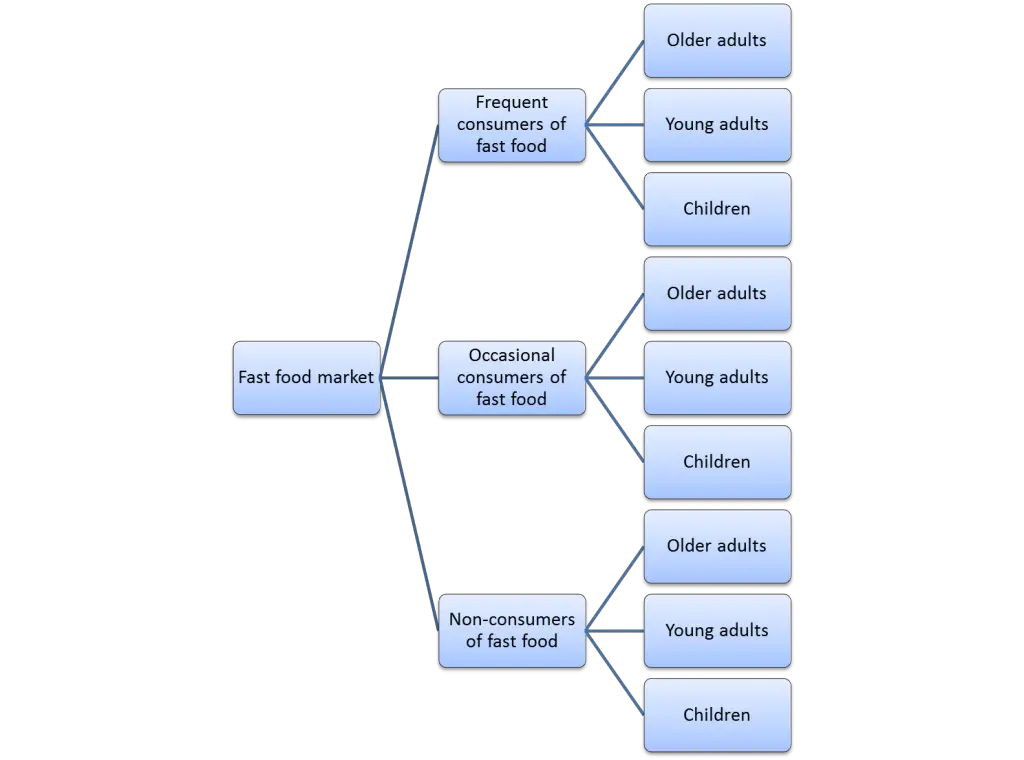How to segment a market? (Technical aspects)
There are two main approaches: cluster analysis (if data is available), otherwise segmentation trees.
Cluster analysis
Cluster analysis is an analysis designed to categorize objects to a pre-defined number of different groups, with each group being relatively similar on a range of selected attributes. The resultant groups are referred to as clusters.
Cluster analysis requires data from a suitable market research study that examines consumer’s , purchase behavior, demographics, and even elements of their lifestyles and attitudes and values.
Cluster analysis is an advanced statistical approach that is conducted using a statistical package, such as SPSS.
When running cluster analysis, the software will cluster (group) respondents together, based on their similarity of answers to particular questions. The analyst then determines what each cluster has in common and defines, labels and profiles each market segment.
Segmentation trees
A segmentation tree is a variation of a decision tree, which visually shows the division of a market into smaller possible market segments.
Segmentation trees are very suitable to use when there is limited or no data available. They are quite easy and quick to construct and can be done in-house by a marketing manager based on his/her understanding of the consumers in the marketplace.
Segmentation trees allows the overall market is split into groups, using one or more segmentation bases. The following diagram shows an example of a segmentation tree:
Additional Resources


